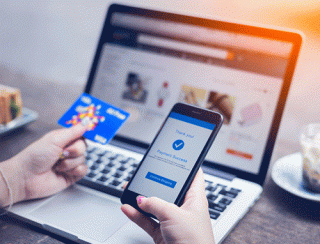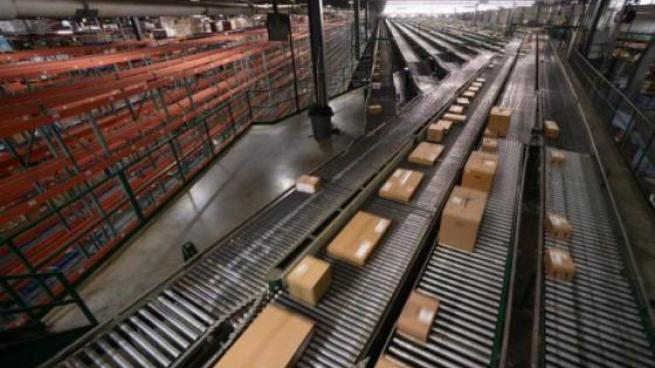Your checkout isn’t broken–but it’s wrong for 70% of your customers

Retailers have long blamed checkout for the 70% of shoppers not completing online purchases.
But with the industry’s belief that checkout is too complex and costly to fix, many retailers have thrown in the towel and dubbed it as “broken”. They’ve opted, instead, to optimize every other part of the e-commerce experience.
The reality is, checkout is not "broken," it's simply not optimized for each specific customer and their buying journey, including the products they're buying, where they're shopping and the device they're on, among various other factors.
Retailers have attempted to drive up checkout conversions by focusing on speed with one-click across the board, or by adding an abundance of new checkout features and payment options. But these checkout upgrades still lead shoppers to the same, generic “one-size-fits-all” checkout–the reason that they’re leaving in the first place.
Many of retailers’ attempts to solve the checkout problem have failed because they don’t deliver the optimal checkout experiences that specific consumers want, or need, to move forward with a purchase.
The good news is that can change.
The age of tailored checkout
Retailers have been so focused on driving conversions through checkout. But just because they’re driving conversions doesn’t mean that they’re driving revenue, nor does it mean they’re optimizing for all the different types of shoppers and buying journeys going through their checkout.
Shoppers are different in what they want to buy and how they buy, so why should their checkout experiences all be exactly the same?
It’s time retailers bring checkout back to shoppers. They can do this with checkout experiences that are specific to individual shoppers’ preferences and how they’re shopping in real-time, or tailored checkout experiences.
Here are three ways brands can curate those tailored checkout experiences that drive more than just conversions:
Different checkout channels need different checkout experiences
Checkout has expanded far beyond e-commerce sites. Consumers can make purchases directly on social media, blogs, QR codes and more. But simply extending checkout to these channels is not enough. Each of these experiences need to be tailored based on the channel itself.
For example, when consumers are scrolling on Instagram, the brand needs to capture their attention fast, or they risk losing them altogether. You may only have seconds as they're standing in a line at Starbucks scrolling.
In this case, one-click checkout is an ideal experience because consumers can buy what they want nearly instantly. Or if a shopper is in-store and scans a QR code on a package, it’s obvious they know what the product is, so they can skip the product page and go directly to checkout.
However, if a shopper is coming from a long-tail Google search for your specific product, or is a logged in repeat customer, speed is not the most critical factor. For these customers you can optimize checkout for upselling, cross-selling and other experiences that maximize average order value (AOV).
Beyond the channel itself, the devices shoppers use also come into play. Mobile checkout should especially be a focal point for retailers, with 58% of mobile shoppers abandoning their purchase after proceeding from cart to checkout.
Checkout should provide value to shoppers beyond the purchase itself
When every other part of their e-commerce experience is hyper-personalized and brand-oriented, it all falls apart at checkout if the experience doesn't offer the same level of tailored personalization.
This means retailers have to integrate things that are important to shoppers, like BOPIS, promo codes, subscriptions and loyalty points, directly into the checkout.
For example, for shoppers that go directly to checkout from social media, where they have less content than they would on a brand’s site, it’s critical all the information they need is in checkout. When retailers opt for generic, one-size fits all checkouts, it’s these features that get left behind.
Shoppers won’t compromise on preferred payment options
Between BNPL options, digital wallets and regular credit and debit cards, shoppers have a variety of payment options available to them. And with that, they likely have specific preferences on how they like to pay.
But there’s a fine line between offering flexibility of payment methods and offering too many payment options. This is why checkouts need to display different payment methods based on shopper context, such as customer segment, past purchase behavior, or device type.
For example, digital wallets may be more prominent for mobile purchases vs. those on desktop. This focus on payment in tailored checkout experiences adheres directly to shoppers’ preferences.
Contrary to the popular belief among many retailers, checkout is not broken and they do not have to forever live with 70% of their shoppers abandoning their cart.
There are ways for every retailer to optimize their checkout and fix it–but they have to look past simply driving conversions. And they don’t need to invest a lot of money or overhaul their existing technology to do it; they just need to start by being in tune with shoppers.





